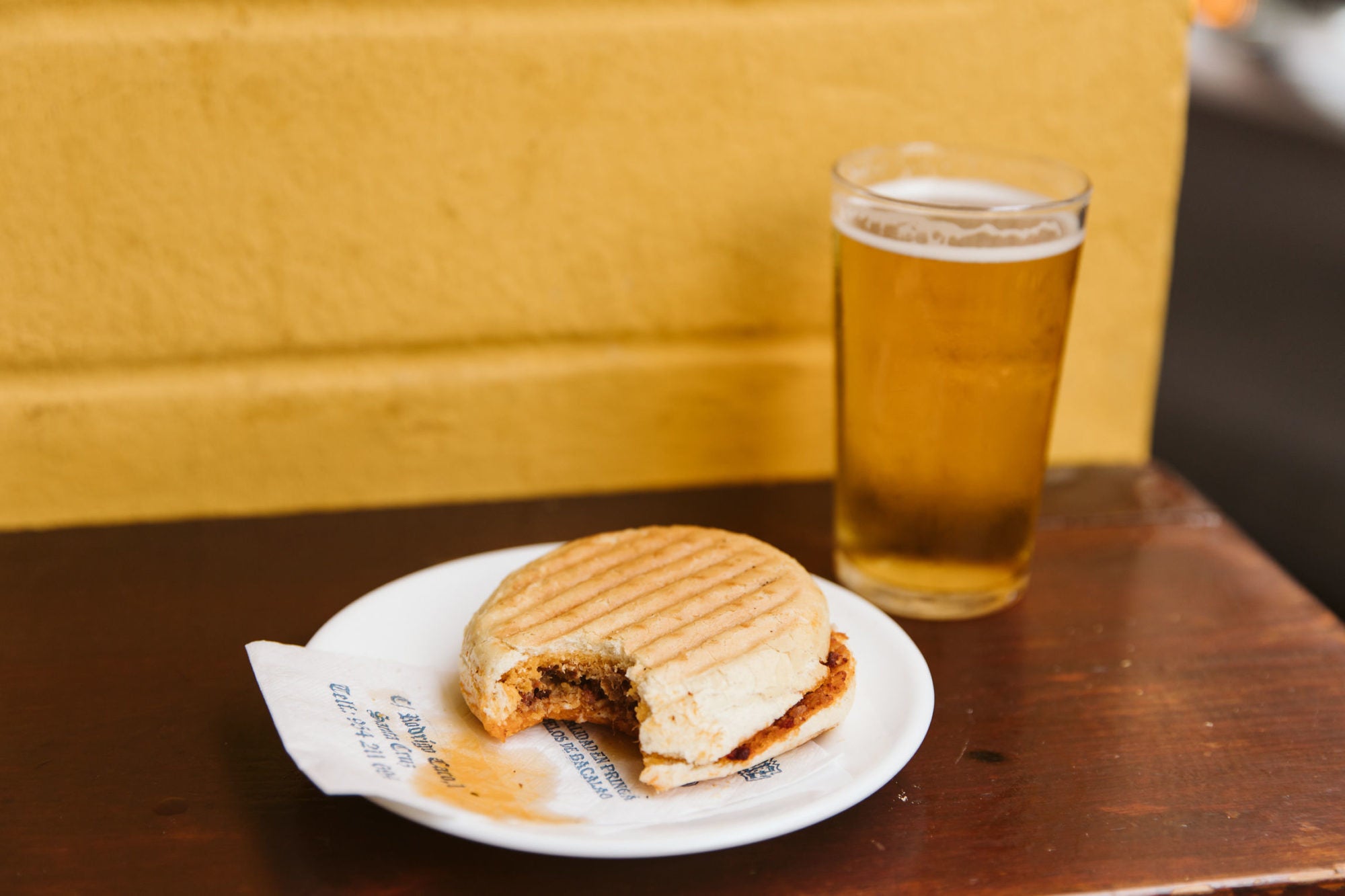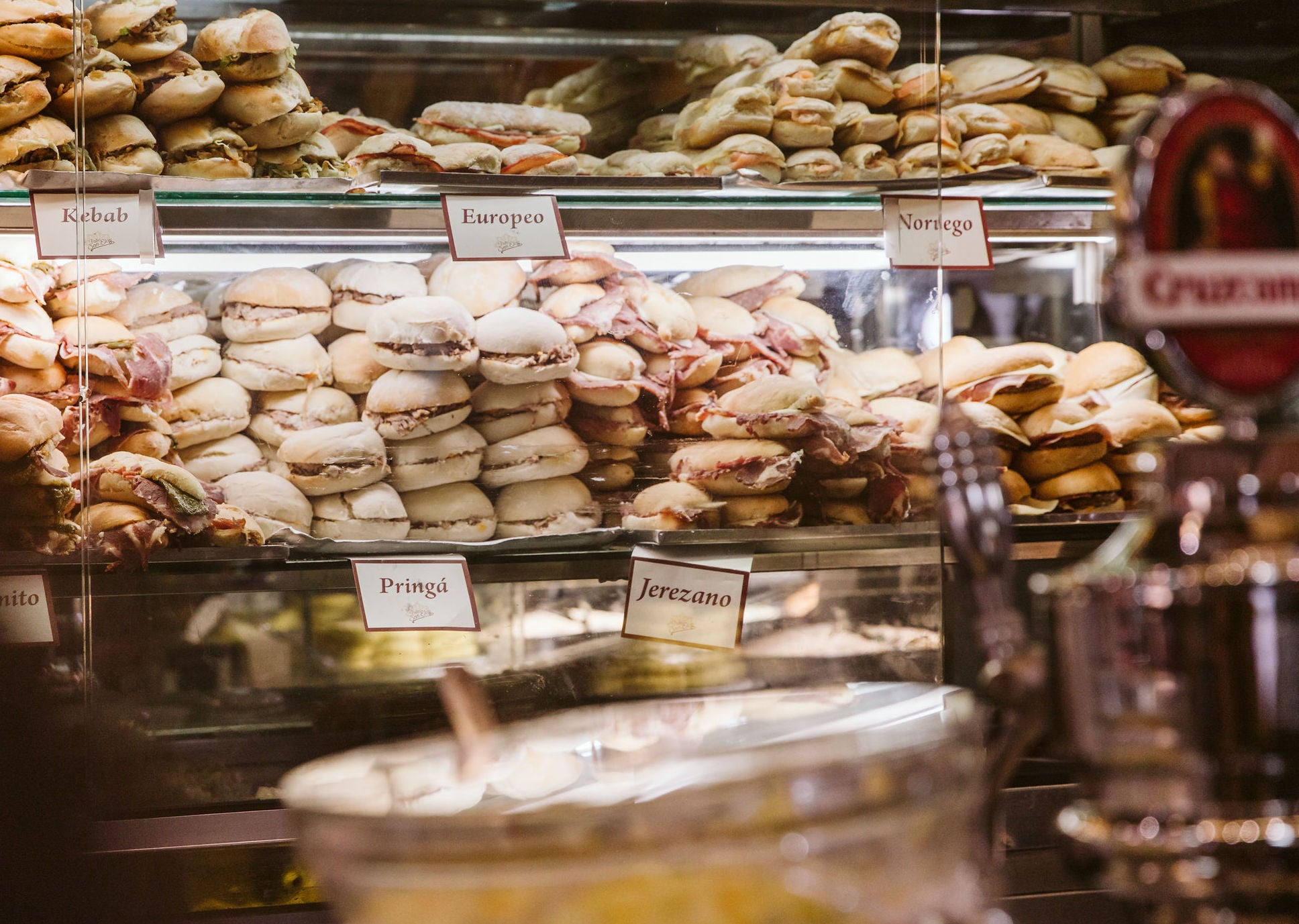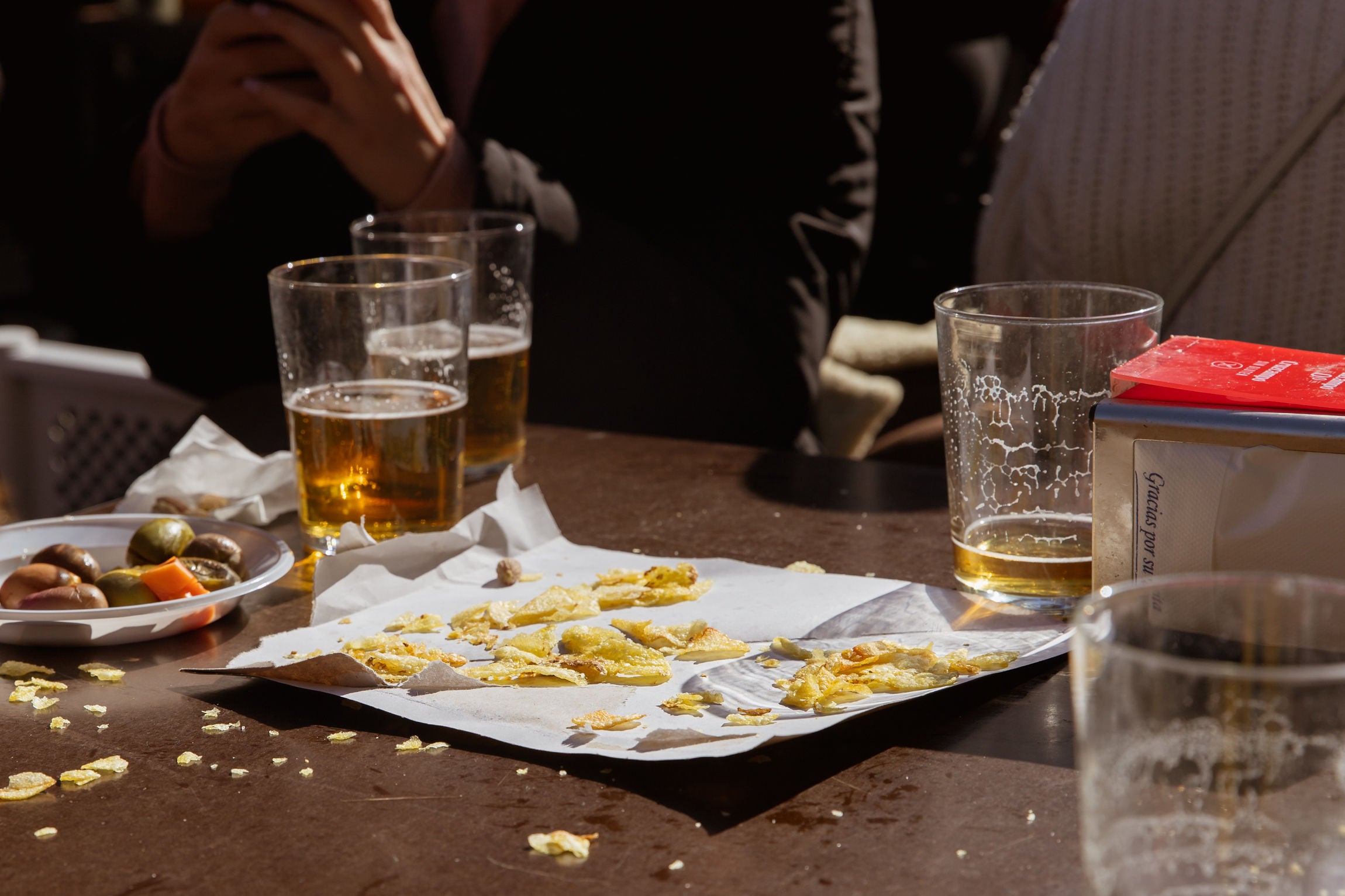
One of Seville’s most popular tapas, the montadito de pringá, is loaded with boiled Spanish staples from the region’s home-cooked stews. But the swine-packed sandwich sheds light on a dark past.
Step up to any bar in Spain’s southern town of Seville, and among the fried fish and potato omelets, you are sure to find the montadito de pringá. The miniature sandwich comes hot and crispy off the panini press, filled with a smoky layer of shredded pork and just enough belly fat to coat your mouth for the next swig of icy Cruzcampo. If you go to the right place, the paprika-stained grease bleeds through the rich filling—leaving every surface of the bread soaked in a porky coating without impeding the toasted crunch. This is Mom’s home cooking, but done on the street.
Pringá, the bar or home cook’s boiled mix of meat—pork shoulder, beef roast, chicken thighs, a hefty portion of pork belly, chorizo, and a blood sausage called morcilla—is finely chopped and stuffed into the middle of the bread, creating the montadito. The five-bite tapa is exactly what you, and every other Spaniard, want in your empty hand while standing in a crowded bar with a drink in the other.

The sandwich, which has existed in some form since the 13th century, has just as much to say about Spain’s past as the 500-year-old Gothic cathedral looming over Seville’s Moorish palaces and ancient Jewish neighborhoods. Before Spain’s conquest of the Americas, the Christians of the northern part of the Iberian peninsula battled the Moors between the 8th and 15th centuries for control of the region and established what we know today as Spain. Seville—one of the prominent towns at the time and only an hour from the southern coast—fell to the Christians in the 13th century, and the new reign of Catholic kings over the residing Muslim and Jewish occupants was, to say the least, unforgiving.
Sephardic Jews were banished from the country in the 15th century, facing three options: convert to Catholicism, get out of town, or face death. At the beginning of the 17th century, the remaining Muslims living in Spain suffered the same fate.
Many converted Muslims, called Moriscos, and baptized Jews continued to practice their religions in secret but faced constant scrutiny. Outward symbols of conversion became key to superficial acceptance. In many instances, this came down to pork. Government inspectors would storm in on the suspected Jews and sniff out traces of heresy. If there wasn’t pork on the table, the Jews’ conversion was deemed a sham, and they could be burned at the stake.

As a survival mechanism, Muslims started to eat pork. Jews started hanging cured hams from their windows. They cooked their vegetables in lard. And they threw ham hocks, pig bones, and chunks of belly into their sacred lamb, garbanzo, and vegetable stew called adafina. The meat, or pringá, was eaten separately, and the garbanzos and broth were used for a week’s worth of enriching stews and soups, cooking grains and veggies, or sipping on its own. Willingness to take down the tender swine pulled from the stew showed their suspecting neighbors they had done away with their porkless ways and were truly devoted to the church—or at least devoted to staying alive.
Every Spanish grandma holds ever-so-tightly to her own version of the recipe, but you can choose whatever meat you fancy, or finally use up that can of beans hiding in the pantry. Stuff the tender meat into toasted buns for a platter of montadito de pringá tapas at your next party. Use the rich broth to cook potatoes and vegetables, and with a handful of garbanzos, you’ve got yourself a savory winter stew. The traditional version of the dish gives you full freedom to use whatever odds and ends you have on hand—though in Spain, pig is still king.